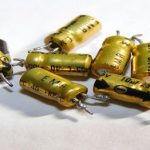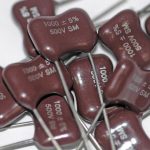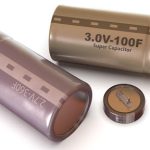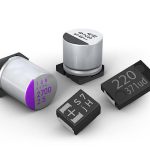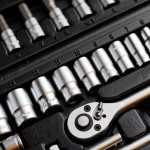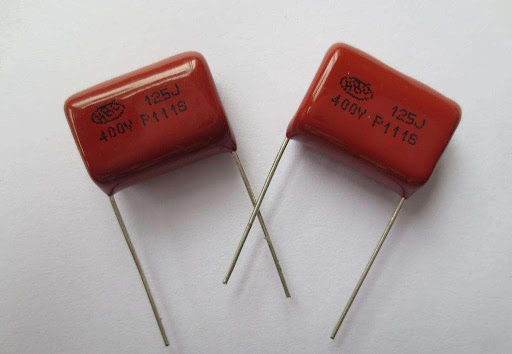
Film capacitors fall in the non-polarized capacitor category and use a thin plastic film as dielectric. These plastic films are usually metalized and are available in the market as metalized condensers. This is why they are also known as plastic capacitors or metalized capacitors. They are used in both electric and electronic equipment. The dielectric used in this sort of capacitor is different and can be of any form of film. A direct electrical connection has been established with the electrodes existing on both windings in the modern type of film capacitors. This decreases the current’s path to the electrode to a minimum.
Film Capacitors are easy to analyze and construct and are known for their dependability. These are inexpensive and reduce losses even when transmission occurs with high frequencies. The structure is constructed from plastic films. Once the film drawing procedure is completed, the film can be coated with a metal.
How Does the Film Capacitor Work?
The film capacitor functions in the same way as a standard capacitor. It holds both the electric charge and the electric energy on the electrode. It is usually produced with an inductor to produce the LC oscillating circuit. The operating principle of these capacitors is that the electric charge will transmit under the electric field when there is a conductor present between the conductor. When a medium is present between them, it inhibits the flow of charge and results in a charge gathering on the conductor, leading to charge accumulation.
Characteristics of Film Capacitors
Film capacitors have superior characteristics due to which they are extensively used in many applications:
These capacitors are not polarized and can be used in AC signal and power applications.
Film capacitors can be constructed with very high accuracy capacitance values to keep their value the same for a longer time. As a result, these capacitors age much slower than other capacitors. Therefore, a film capacitor has a long service and shelf life and a low average failure rate.
Film capacitors may also produced with high precision capacitance values for a prolonged period than the other types of capacitors.
These capacitors can tolerate voltages in the range of Kilovolt and offer powerful surge current bursts.
Construction of Film Capacitors
Utilizing a complex film drawing technique, this film is made extraordinarily thin. The film is cut into strips whenever pulled to the standard thickness. The width of the ribbons is set by the limit of the capacitor being fabricated. Two film strips or ribbons are wrapped together to frame a roll, often smoothed into an oval shape to fit inside a rectangular packaging.
This is huge because rectangular parts moderate significant printed circuit board regions. Contingent upon the expected attributes of the Capacitor, the film might be metalized or left untreated after manufacture. From that point forward, cathodes are connected, and the assembly is set in packaging to safeguard it from ecological impacts. Utilizing oneself mending normal for film capacitors, a voltage is given to consume with smoldering heat any defects. From that point onward, the casing is fixed with silicon oil to save the film roll from dampness and dunked in plastic to seal within airtight.
Film capacitor arrives in an assortment of materials, including polyester film, metalized film, polypropylene film, PTFE film, and polystyrene film. The capacitance ranges from less than 1nF to 30F. It is manufactured in voltages that range from 50V to more than 2kV. These capacitors can designed to use in high-temperature situations, high-vibration automobile settings, and high-power applications. These Capacitors have low losses and greater efficiency.
Applications of Film Capacitors
Film capacitors are used in various applications because of their properties like low cost, stability, and low inductance, which include:
In circuits, film capacitors are widely used for high-frequency bypass, high-frequency filtering, and first or second-order filtering. Sectors like Telecommunications, household appliances, electronics, electrified trains, electric power, wind power, hybrid cars, solar energy, and many more use these capacitors effectively.
Film capacitors have lower ESR and ESL values and a decreased distortion value. Due to this, they used in many AC applications. Additionally, they age very slowly and resist the wearing-out stage for as long as possible. As a result, Film Capacitors are a popular choice for high frequency and high voltage applications.
Film capacitors can used in some traditional applications like audio crossovers, voltage smoothing, and filters. It can effectively store energy and then release it in the form of a high-current pulse when there is a requirement to do so.






